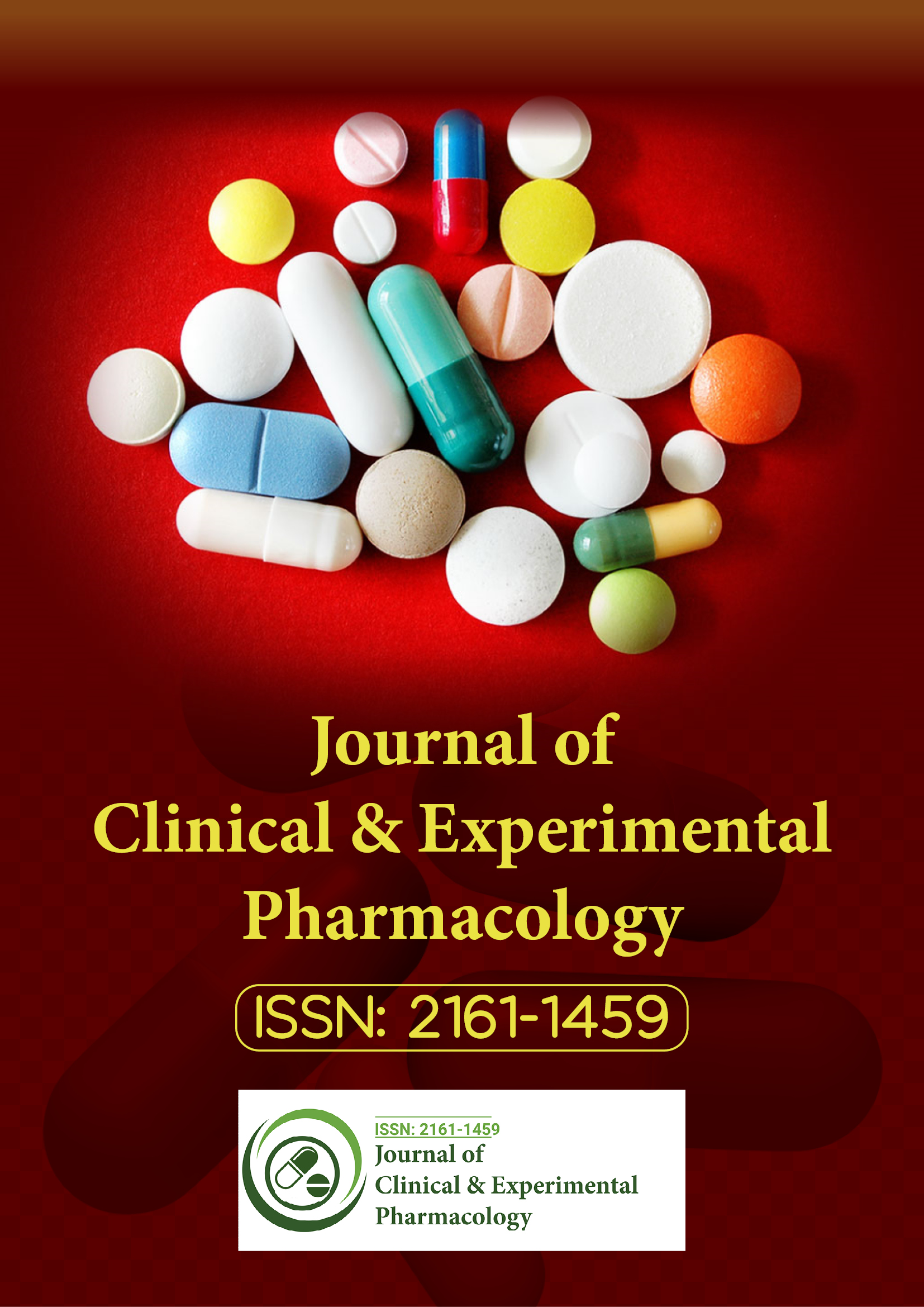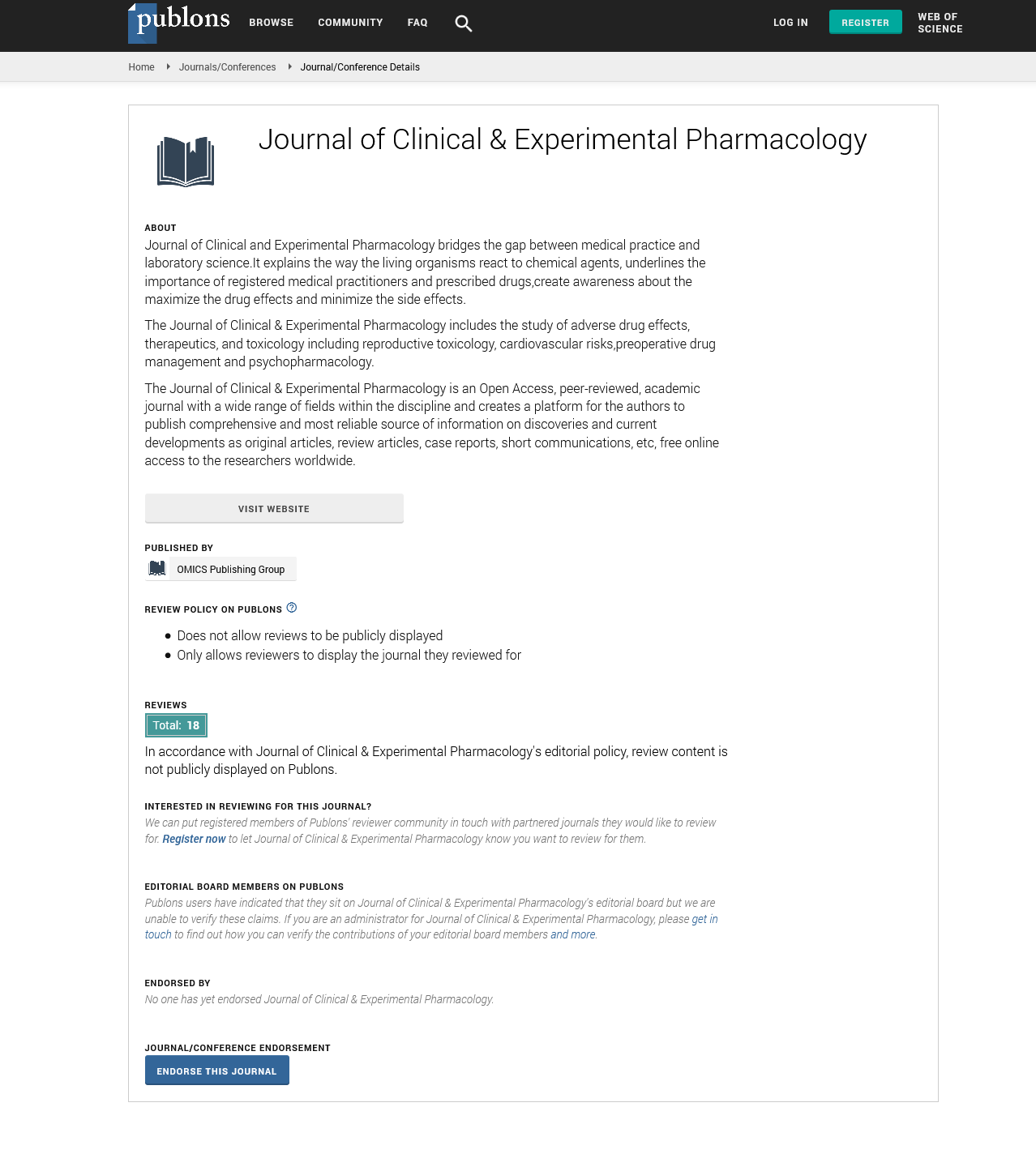Indexed In
- Open J Gate
- Genamics JournalSeek
- China National Knowledge Infrastructure (CNKI)
- Ulrich's Periodicals Directory
- RefSeek
- Hamdard University
- EBSCO A-Z
- OCLC- WorldCat
- Publons
- Google Scholar
Useful Links
Share This Page
Journal Flyer

Open Access Journals
- Agri and Aquaculture
- Biochemistry
- Bioinformatics & Systems Biology
- Business & Management
- Chemistry
- Clinical Sciences
- Engineering
- Food & Nutrition
- General Science
- Genetics & Molecular Biology
- Immunology & Microbiology
- Medical Sciences
- Neuroscience & Psychology
- Nursing & Health Care
- Pharmaceutical Sciences
In vitro cytotoxic and genotoxic evaluation to ascertain toxicological potential of Ketoprofen
World Congress on Pharmacology
July 20-22, 2015 Brisbane, Australia
Dawood Ahmad Hamdani*, Aqeel Javeed, Muhammad Ashraf, Jawad Nazir, Aamir Ghafoor, Imran Altaf and Muhammad Shahbaz yousaf
Posters-Accepted Abstracts: Clin Exp Pharmacol
Abstract:
Ketoprofen analagesic and anti-inflammatory properties are well known but little work is done about its cytotoxic activity and the potential to damage the DNA. The present study was designed to evaluate the cytotoxic and genotoxic potential of ketoprofen. MTT dye (3-(4, 5-Dimethylthiazol-2-yl)-2, 5-diphenyltetrazolium bromide) was used to assess cytotoxicity in which confluent monolayer of Vero cells were incubated in the presence of increasing concentrations of ketoprofen. Genotoxicity was evaluated by SCGE (single cell gel electrophoresis) assay or comet assay. Lymphocytes were separated from the mice blood and treated with different concentrations of ketoprofen. Lymphocytes were incorporated in agarose gel on cavity slides and visualized for strand break to asses DNA damage. Ketoprofen concentrations 8 mM, 6 mM, 4.5 mM, 3.3 mM, 2.5 mM, 1.8 mM, 1.4 mM, 1 mM, 0.5 mM were used for both cytotoxic and comet assay. The results of cytotoxic assay showed significant (p<0.001) cytotoxicity at 8 mM, and 6 mM concentrations. The cytotoxic concentration for 50% of cells (CC50) value was calculated at 5.2 mM concentration. In case of the comet assay ketoprofen presented DNA damaging potency, creating significant (P<0.001) DNA damage at 8 mM concentration, a moderate damage at 6 mM concentration and a mild damage at 4.5mM concentration which was evident from the comet tail lengths and changes in head diameter. DNA damage index was calculated for each concentration of ketoprofen and compared with the control. The data advocates that ketoprofen possesses cytotoxic and genotoxic potential at higher concentrations and its dosage should be carefully monitored to avoid its toxicity.

